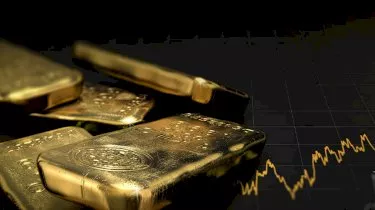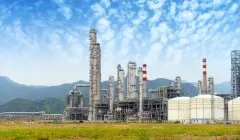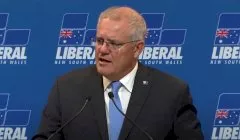Invest
How to invest: Ways to invest in commodities
People consider commodities as an asset class that’s more volatile than stocks since commodity prices fluctuate according to its supply and demand in the global commodity markets.
How to invest: Ways to invest in commodities
People consider commodities as an asset class that’s more volatile than stocks since commodity prices fluctuate according to its supply and demand in the global commodity markets.

Many rookie investors have tried their hand at investing in commodities only to experience great losses in their portfolio due to the market’s volatility.
However, investing in commodities can be profitable for the investor if they follow a sound strategy.
What are “commodities”?
Commodities are the raw materials that companies use to manufacture new products. These raw materials can be classified as hard or soft commodities depending on how it is acquired.
Hard commodities are raw materials that are typically extracted or mined. Crude oil, natural gas and gold and other precious metals and minerals are all hard commodities.

Soft commodities, on the other hand, are usually grown or reared. Examples of soft commodities are agricultural products, such as wheat, coffee and soybeans; and livestock, such as fish and cattle.
Commodities were traditionally traded by merchants as part of their business production. For instance, a farmer may sell their harvested wheat to a cereal manufacturer at an agreed price when certain conditions are satisfied. However, there are ways to invest in commodities without taking on either of these roles.
Four ways to invest in commodities
People and companies that extract raw material and manufacture products from them are the main participants in the commodities market, but you can also invest in commodity markets through any of these four ways:
- Direct investment
- Commodity futures trading
- Trading shares of commodity companies
- Exchange-traded funds (ETFs)
Direct investment
Direct investment means that the investor will buy or sell physical commodities, similar to the role of commodity producers. The only difference is that investors won’t need to actually extract or produce the commodity they will trade.
Becoming a direct investor is similar to becoming the middleman for producers and manufacturers. Your role is to buy the raw materials from producers, receive delivery and store them until such a time that its price increases enough to make a profit – then you sell the materials to manufacturers that need it.
Your main concern is to rent or own a storage facility that is big enough for the amount of materials you will stock. You’ll have to make sure that the raw materials, especially those that are perishable, are stored properly and sold while in good condition.
If you invest in hard commodities, especially in precious metals, one of the biggest risks you face is liquidity. Unlike stocks that can be divided into share units, precious metals aren’t divisible because they have to adhere to certain standards. This indivisibility decreases the opportunities of closing a sale transaction with potential buyers who have a smaller capital.
Commodity futures trading
Trading commodity futures contracts refers to when manufacturers and producers agree to buy or sell a certain amount of raw materials at a set price. This helps both parties avoid significant financial losses when market prices change, especially when raw materials are purchased in large quantities.
For investors, on the other hand, investing in futures is a way to bet on which direction a commodity’s price will go.
For instance, an initial investment of $12,500 may allow an investor to enter a futures contract for 50 metric tons of wheat valued at $15,000 ($300 per metric ton) by 30 October of the current year. If the investor’s speculation is correct and wheat is valued at $300 per metric ton by expiration date, they would make a $2,500 profit.
However, the investor will incur a loss of $2,000 ($40 per metric ton) if an oversupply of wheat plunges its price to $210 by the expiration date.
Some investors confuse futures and options contracts since both are speculative assets. What makes them different, however, is that the investor has no choice but to execute the terms of a futures contract upon expiration regardless of the commodity’s current price.
Trading shares of commodity companies
Investors may also access commodities by buying individual shares of commodity companies in local and international stock markets.
By doing so, the investor has full control over which sectors and companies to add in their portfolio. They can also benefit from profits or an increase in value if the underlying company experiences business growth.
Another advantage is that exposure to price fluctuations is limited to share prices since these do not move in accordance to the movement of prices in commodity markets.
Investors who want exposure to a variety of commodity assets may wish to consider investing in ETFs instead.
Exchange-traded funds (ETFs)
ETFs are low-cost, long-term professionally managed investment options that have a wide investment spread. However, ETFs with a concentrated portfolio can be composed of a variety of asset classes from a specific sector.
These funds invest in commodities directly, trade futures contracts and trade commodity stocks, bonds and managed funds, such as mutual funds, index funds and other ETFs.
Several Australian Securities Exchange-listed ETFs invest in hard and soft commodities in local and international commodity markets. While majority invests in precious metals, there are some that are invested in crude oil and agricultural products and companies.
If you want to invest in commodities but lack the knowledge, time or skills to do so, buying ETF shares is the best way to gain exposure to the commodities market. This is because fund managers also apply risk management strategies to limit potential risks and losses.
Seek professional advice
Professionals recommend limiting commodity investments to only 5-10 per cent of your portfolio because any larger would heavily impact your portfolio when loss occurs.
A good way to limit exposure to risk or avoid high-risk assets is to seek the advice of a licensed professional who has knowledge and experience with commodity investments.
Explore Nestegg.com.au for more information on different investment assets.
About the author

About the author


Commodity
Is crypto getting the shaft for a big gold re-polish?
While the spotlight shines on trendy cryptocurrencies, investors evidently haven’t lost interest in traditional and tangible commodities like precious metals. Read more

Commodity
Morrison’s gas-led recovery sees manufacturers ‘held to ransom’ by gas cartel
Australia’s manufacturing sector and its workers are being ‘held to ransom’ by the gas cartel, despite the Morrison government promising cheap gas as a key policy in the COVID-19 recovery planRead more

Commodity
‘Investors should take note’: Gas-led recovery to lead to stranded assets
Australia’s gas-led economic recovery could be relying on inaccurate financial assumptions, new research has revealed. Read more

Commodity
Credibility up in flames as government opens 21 new gas and oil exploration sites
Climate groups are saying the Morrison government lacks any credibility when it comes to climate change after it announced 21 new gas and oil exploration areas. Read more

Commodity
Morrison urged to drop gas-led recovery after new global warning
The International Energy Agency has found that countries like Australia need to transition their energy grid within 14 years to reach net zero, defying Prime Minister Scott Morrison’s gas-led economic ...Read more

Commodity
Taxpayers to bear brunt of Morrison’s $2bn pledge to oil refineries
Taxpayers are set to be on the hook for up to $2 billion over the next decade as the government commits to protecting two oil refineries. Read more

Commodity
Government unveils $1bn energy deal
The Morrison government has announced a $1.1 billion energy and emissions agreement between the federal and South Australian state government. Read more

Commodity
Australia can get rid of coal without prices skyrocketing
Australia’s transition to renewable energy is unlikely to create unaffordable electricity prices or come at the risk to reliability, with policymakers urged to generate the majority of power from ...Read more

Commodity
Is crypto getting the shaft for a big gold re-polish?
While the spotlight shines on trendy cryptocurrencies, investors evidently haven’t lost interest in traditional and tangible commodities like precious metals. Read more

Commodity
Morrison’s gas-led recovery sees manufacturers ‘held to ransom’ by gas cartel
Australia’s manufacturing sector and its workers are being ‘held to ransom’ by the gas cartel, despite the Morrison government promising cheap gas as a key policy in the COVID-19 recovery planRead more

Commodity
‘Investors should take note’: Gas-led recovery to lead to stranded assets
Australia’s gas-led economic recovery could be relying on inaccurate financial assumptions, new research has revealed. Read more

Commodity
Credibility up in flames as government opens 21 new gas and oil exploration sites
Climate groups are saying the Morrison government lacks any credibility when it comes to climate change after it announced 21 new gas and oil exploration areas. Read more

Commodity
Morrison urged to drop gas-led recovery after new global warning
The International Energy Agency has found that countries like Australia need to transition their energy grid within 14 years to reach net zero, defying Prime Minister Scott Morrison’s gas-led economic ...Read more

Commodity
Taxpayers to bear brunt of Morrison’s $2bn pledge to oil refineries
Taxpayers are set to be on the hook for up to $2 billion over the next decade as the government commits to protecting two oil refineries. Read more

Commodity
Government unveils $1bn energy deal
The Morrison government has announced a $1.1 billion energy and emissions agreement between the federal and South Australian state government. Read more

Commodity
Australia can get rid of coal without prices skyrocketing
Australia’s transition to renewable energy is unlikely to create unaffordable electricity prices or come at the risk to reliability, with policymakers urged to generate the majority of power from ...Read more











